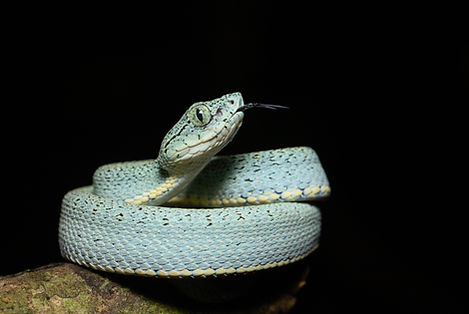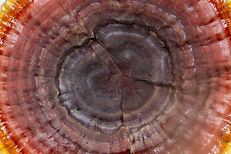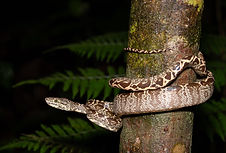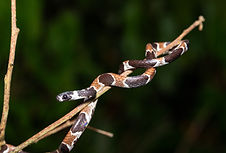Personal Log
Here I will write weekly updates about what life is like in the middle of the Ecuadorian Amazon, taking a more personal approach.
Week 1 (5/31- 6/6)
After a couple flights, I finally landed in Ecuador and met up with Owen- another undergrad conducting research on a similar topic with snakes. The next couple days were used for traveling to our first research station which included a scary drive through wet, windy roads and a couple boat rides along the river. We arrived with two other student groups, making it one of the largest groups TBS has had.
The two main personal concerns I had going into this experience were related to communication and food. I have taken six years of Spanish throughout middle and high school, so I thought that I would be able to communicate decently well, but my Spanish is not as good as I thought it was. Most of the staff do not speak any English, so I am a little worried about my lack of Spanish skills; but I am hoping that I will improve throughout the summer. My biggest challenge while traveling is finding food I can eat. I follow a vegan diet, so I do not eat any animal products. This does not seem to be very common in the country, so many of my meals have very little protein. I am planning to talk with the kitchen staff to see if we can work something out. I also eat a lot of food. A phrase that I have learned and say quite often is "¿Podría tener más comida?", which means "Could I have more food?"
This is my first time in South America and so far it has been an amazing experience. The landscape is beautiful and the wildlife is amazing. Some animals that I have enjoyed seeing include various monkey species and a few snake species. I was not prepared for how wet the Amazon was going to be- the ground is always muddy, most of the vegetation is covered in water droplets, and it rains almost every day. Being from Florida, the heat is not anything I am not used to, but the humidity is what gets me. As soon as I turn off the shower, I already start feeling gross, sticky, and sweaty. I am starting to get used to the feeling, but it is definitely not something I enjoy.
A large hobby of mine is photography, especially of wildlife and herpetofauna. While I am not able to bring my camera out on surveys since we need to move quickly, we have found a handful of snakes around camp during downtime that I was able to photograph. It's so cool being able to photograph completely different species from what I am used to seeing.
I'm really looking forward to the next several weeks and all the new things that I will see!



Week 2 (6/7- 6/13)
Right now, it's a little hard to separate the research and personal side of things, but I will try my best not to talk too much about the surveys in my personal log. The research I'm doing is exactly what I do in my free time- going out to look for reptiles and amphibians- just with a few added steps. I'm sure this will change after the field season ends and I start doing my analysis. Some of the species that I really enjoyed seeing on survey include a garden tree boa, a two-lined forest pit viper, and many poison dart frogs.
The two main concerns of mine were not too big of a deal this week. While I did not communicate in spanish too much, my learned phrase from last week to ask for more food was very useful. Most of the other researchers here also speak english which made me feel better about my lack of spanish skills compared to the student group last week that was here for spanish immersion and mainly spoke spanish. Food was also not not a big problem this week since I talked with the staff about having beans with every meal and they quickly realized that I eat a lot and increased my portion sizes.
Most of our time is spent conducting surveys, entering data, eating, or sleeping. This only makes free time that much more enjoyable. After most surveys, we will walk around camp to lookl for snakes. We can't use this as survey data, but it is helpful to get an idea of the diversity in the area. While this is technically for research purposes, if we find something cool I am able to grab my camera to take photos- which is exactly what I did when we found a garden tree boa. Later this week one of the other groups. that were leaving arranged a boat ride to try and find some cool animals. While we did not see the main target- the river dolphins- we did see some cool animals including a variety of monkey species, mutiple groups of macaws, and a sloth far up in the tree.
This station seems to house fewer people on average than TBS. Because of this, we were able to get to know most of the other people pretty well. A couple of the groups were also herpetologists, so it was cool to talk with people who have the same interests working in the field I plan on working in. One of the other researchers here is a PhD student from UF so I'm sure I will be seeing him around campus- it's pretty cool to see how small of a field ecology research is!
Apart from the first night, it was a pretty slow week in terms of target animals seen, but it's impossible to complain when in the most biodiverse area in the world!



Week 3 (6/14- 6/20)
It's always a good week when I'm able to get my camera out, and this week I had many chances to photograph various subjects. I was able to get some photos that I was pretty happy with. I went on a short hike before dinner one night and stumbled upon a frog feeding on ants that were crawling down a trunk. Leaf-cutter ants are an iconic animal in the Amazon, and since there are many colonies at this station, I took advantage one afternoon and got some photos. I don't know too much about fungi, but their diversity appears very high. Many of the species look quite interesting, so while collecting samples to help with a project from last year, I brought my camera along and took some photos of cool-looking mushrooms.
The wifi is still down from last week. We found out the reason for this is that one of the researchers uploaded over 800 GB of data to the cloud, using up the majority of the terabyte of high-speed internet. This made many of us realize how addicted to our phones we really are. I studied abroad in South Africa last fall, so I used the lack of internet to go through many of those photos.
The last day of this week was our travel day, and the day that we met JP, an Ecuadorian student we're bringing on to assist with our projects. It's only been a day but he seems nice and he has proven that his skills are no joke- spotting many herps that Owen and I walked right past during survey. I'm looking forward to getting to know him more and using his skills to hopefully find more animals on survey.




Week 4 (6/21- 6/27)
This week was the start of our final rotation at TBS. This was another pretty good week for my photography. During one of the nights that we had off from surveying, JP and I went on a night hike on one of the most reliable trails at the station. It started out slow with no herps found at all. After about an hour and a half, we finally found the first snake- a whipsnake, and not too long later, I spotted the target species I was hoping to see that night- a rainbow boa! Throughout the week I took advantage of the canopy observation tower that was a short walk away. I spent a few sunsets up there as it is very peaceful and is a good place to see cool birds (most of which were pretty far away so I wasn't able to get good photos).
Many of my meals have been just vegetables and rice, which is not ideal when doing long hikes multiple times a day. I have started asking for beans as a second plate, which works most of the time and seems to be the best way to get my protein in. I'm looking forward to returning to YRS since they give larger portions as well as more beans. YRS also has hot water and AC in the rooms, which TBS does not.
We have been getting to know JP a lot more this week- you get to know people pretty quickly when you spend nearly all day every day with someone. After surveys, we all hang out in the lab for a little before going to sleep, just to wake up a few hours later for breakfast.




Week 5 (6/28- 7/4)
This was a pretty exciting week. Before one of our night surveys, I had a good feeling. It started out slow but right at the end of our survey we found a giant ribbon coral snake. It was right next to camp so I was able to get some photos with my camera. I went on a few walks with my camera so was able to get a handful of photos I liked. We also found a few caimans this week which I always enjoy seeing. The one time I decided to photograph one of them, when I came back with my camera, it was unfortunately gone.
Another reason this week was exciting was that we were able to join in on some of the activities that the student groups did. We floated down the river a couple times which was very relaxing. I climbed some of the trees that lined the river to jump into the water. One of the trees was covered in ants which stung me. As I was climbing another tree I fell off and my leg got stuck between two trees in a V shape. This was a little frightening, but luckily I was able to get out with just a bruise and a scrape.
The food is still pretty poor, sometimes consisting of just rice and vegetables. I talked with the staff again to see if I could get more protein in my meals. Some of the meals were alright and some were not great- only a few more meals until YRS food again!
When I pulled out my suitcase to start packing for the travel to YRS, I found that some of my items were covered in a layer of mold. I cleaned off the mold and started packing. I carried my bags up and down the TBS stairs one last time before boarding the boat to YRS.






Week 6 (7/5- 7/11)
The water level at YRS was higher than I, and Owen, had ever seen before. The little drainage ditch had turned into a large river-sized collection of water. The usually ankle-deep water between the trees was now waist-deep. We thought these conditions would be good for finding anacondas, but unfortunately, none were found despite walking these areas many times.
I feel like I say this every week, but I took some good photos this week- it's hard not to when you're in one of the most biodiverse places in the world.
JP and I decided that we were going to get stung by a bullet ant- rated as the most painful sting in the insect world. This just felt like something we needed to experience while in the Amazon. We took note of nests we saw while on the trails. The evening we got stung, we collected a couple of bullet ants and set up at a table outside. We had an EPIPen in case anything went wrong. We picked up the ants and placed them on our arms. They wouldn't sting just by being placed on our arms, so we had to push them into our arms a little. I was pretty scared before, expecting the worst pain of my life, but the sting was not as bad as I was expecting. The initial sting was a slight burning sensation at the sting site. I ended up getting stung four times that night. The pain slowly increased over the next several hours and even woke me up a couple of times that night. The sting site hurt for a couple of days and the swelling was pretty bad, but now I can say I experienced the sting of a bullet ant.








Week 7 (7/12- 7/18)
This last week in the field we had a lot more free time since we were finishing up our surveys. I went on a few walks during the day with my camera. On nights we didn't have surveys, a group of us would go out. I'd bring my camera out on these nights. Between the day and night walks. I was able to take a lot more photos. A couple of the surveys we didn't see any snakes, but almost immediately after ending the survey, we found a snake, including a rusty whipsnake, a snail eater, and a rainbow boa; all of which I was able to take photos of.
On our way back from one of our surveys, we decided to stop by the lagoon and row around in the little canoe that is always there. We had to empty out the water with a little plastic container, sit on a stick jammed between the canoe walls, and row with a stick. With four people in a tiny wooden canoe, it was very unstable and we thought we might flip, but luckily, we were able to stay afloat.
The power going out the last couple days ended up providing one benefit- there was a rare night where the sky was clear, so a handful of us walked out to the field to look at and photograph the stars and the Milky Way that were visible thanks to the non-existent light pollution.
The night before we left, I walked around at night until my camera died, taking photos of whatever I could find, which ended up being mainly ants. I am definitely going to miss the Amazon but am happy to be going home. I will have to return in the future to try and find some of the species that we did not see, including anacondas, jaguars, and some of the viper species.








Week 8 (7/19- 7/25)
This week was our travel week from the middle of the Amazon back to civilization and then to home. We took a very long bus ride over a very bumpy road and then transferred onto our last boat ride to Coca. We stayed in Coca for a night and then decided to take a 30-minute flight instead of a 10-hour car ride to Quito. While in Quito we explored the city park. Owen and I played a game of basketball against some of the locals and somehow managed to win the game. After basketball, we checked out the Vivarium, which housed many of the snake species that we were unable to find in the field. Before our flights, we went to a nearby mall to grab some food.
After a long travel, I finally arrived home. I was able to get some much-needed sleep and relaxation, as well as plenty of enjoyable food. I was also able to go through all of the photos I took and choose the ones I liked the most, which can be found on the photos page of this site.


